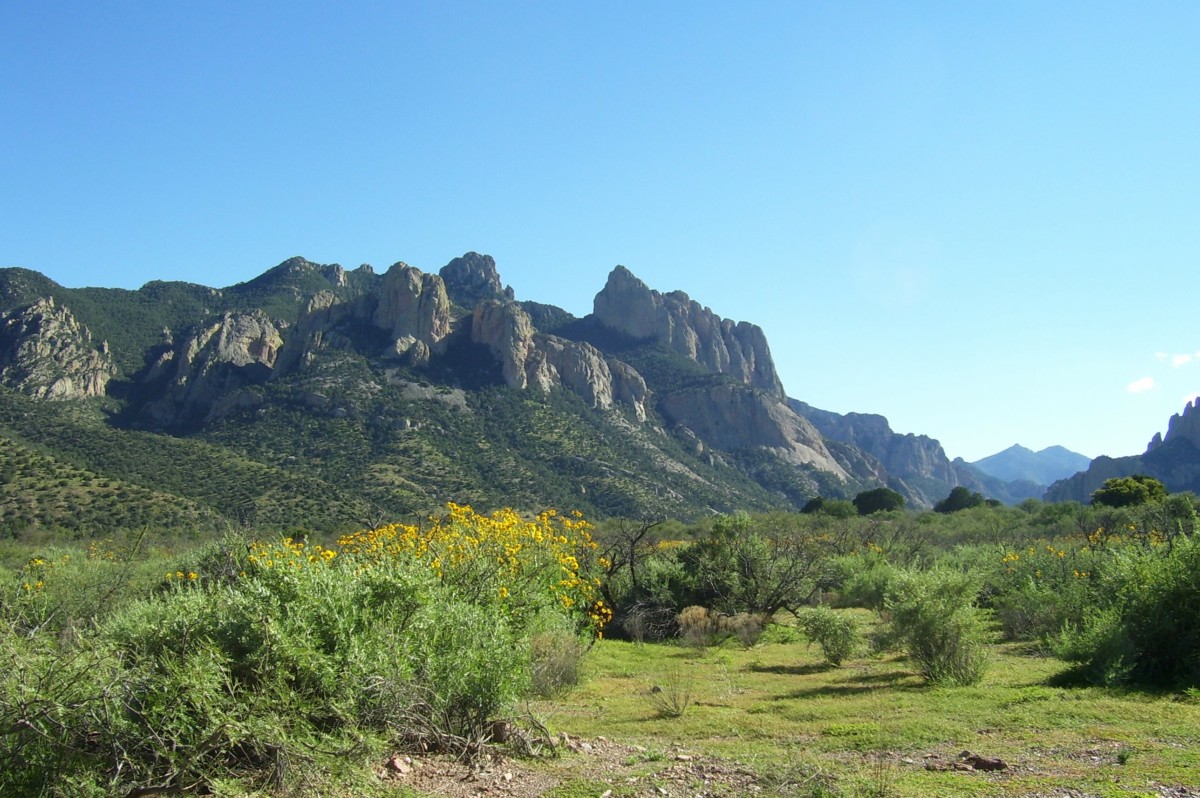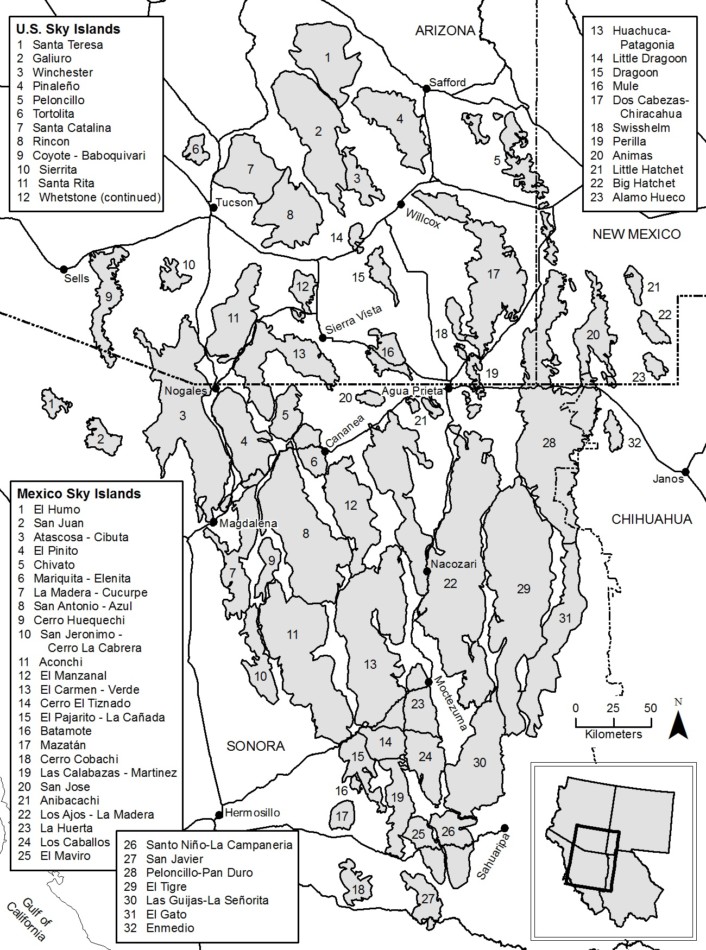The Sky Islands. You probably hear these islands mentioned a lot in southern Arizona and northern Sonora, or see us refer to them in our social messages and on our website. In fact, it’s even there in our name, Sky Island Alliance—a nonprofit organization dedicated to protecting and restoring the diversity of life and lands in the Sky Island region.
Sky Islands, Sky Island region, las Islas del Cielo… These terms all refer to the 55+ mountain ranges in Arizona, Sonora, and a small part of New Mexico that tower above the clouds, looking like islands of habitat floating in the sky. But why is the distinction “Sky Islands” so significant when there are just as many high elevation mountain ranges in the U.S. and Mexico—some of which are even higher? And where did the term Sky Islands even come from?

Photo Caption: View of Cave Creek Canyon in the Chiricahua Mountains from the town of Portal, AZ.
Good questions! Let’s do a quick dive into all things Sky Islands.
The Sky Islands: A Brief History
1. The concept of “Sky Islands,” as a reference to our local mountain ranges, first came about in 1943 when writer Natt N. Dodge referred to Arizona’s Chiricahua Mountains as a “mountain island in a desert sea” in an article he wrote for the magazine Arizona Highways.
2. Twenty odd years later, Weldon Heald, a nature writer who lived in Tucson, used “Sky Island” while describing his experience driving through the desert and up to a peak of the Chiricahua Mountains. He published this account in his 1967 book Sky Islands, and the term soon took hold in the scientific community.
3. Since the 1960s, the term “Sky Island” has been used to refer to any mountains that are a) higher than 3,000 feet and b) are isolated from other mountain ranges in the region by lowland habitats—such as deserts or grasslands.
4. However, despite being created to refer to Arizona’s Chiricahua Mountains (and other similar ranges), the term “Sky Island” can actually be used to describe any mountain in the world that meets the above definition!
What are the Sky Islands of Arizona and Sonora?
5. Though the term “Sky Island” can be used globally, there is a particular region of Arizona and Sonora that is officially called the “Sky Island region” or “The Madrean Sky Islands.”
6. This Madrean Archipelago (archipelago = a group of islands) is made up of isolated mountain ranges that reach elevations between 3,000 – 10,000 feet and span from the Colorado Plateau in the U.S. to the Sierra Madre Occidental in MX.

Photo Caption: A map of the Sky Island region, complete with listed mountain ranges. Some of these ranges, such as the Huachuca-Patagonia in Arizona, are listed together but should be counted separately.
A Hotspot of Biodiversity
7. Within these 55+ individual ranges lives an incredible amount of biodiversity. The habitats of the Sky Island region include the Sonoran and Chihuahuan Deserts, grasslands, oak woodlands, pine forests, and everything in between—creating a region that is both temperate and tropical, that can reach over 100 degrees in the summer and yet snow in the winter, that supports native plants and migratory wildlife.

Photo Caption: An illustrated depiction of the various biomes that can be found within our Sky Islands.
8. Endemic species (those found nowhere else in the world), animals that move back and forth between higher and lower elevations, and refugee species found in one last remaining place are just a few of the natural wonders that can be found in our Sky Islands.
9. Finally, did you know more than 7,000 species of plants and animals—including over half of the birds in North America—can be found within this region alone? Just another reminder that we live in an incredible and unique part of the world.
If you’d like to learn more about the Sky Islands, here’s a great video by the Flandrau Science Center:

